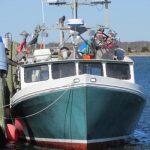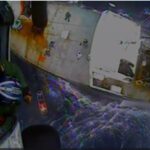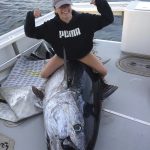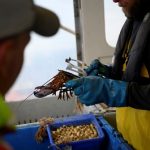Tag Archives: management measures
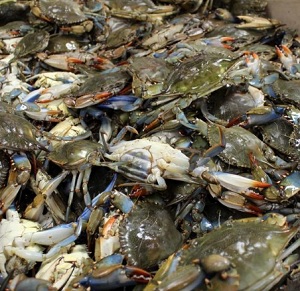
North Carolina: New blue crab management plan in the works
N.C. Marine Fisheries Commission recently announced it is moving forward with management measures for the blue crab that are designed to end overfishing. One of the biggest proposed changes is establishing closed seasons for the harvest, said Jason Rock, biologist supervisor with the Division of Marine Fisheries. >click to read< 15:09
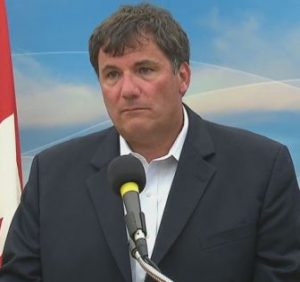
“We’re expecting 100 per cent compliance,” New snow crab fishing rules rein in use of ropes to protect North Atlantic right whales
Fisheries and Oceans Minister Dominic LeBlanc has announced four changes to the snow crab fishery in the southern Gulf of St. Lawrence to protect North Atlantic right whales from entanglement, including reducing the amount of rope floating on the surface and mandatory reporting of all lost gear. The new management measures will take effect immediately and will be enforced “very aggressively,” LeBlanc said during the news conference in Moncton on Tuesday. >click here to read<16:29
NMFS Implements Management Measures to End Overfishing of Blueline Tilefish in the South Atlantic

NOAA Fisheries NMFS is implementing management measures in Amendment 32 to the Fishery Management Plan for the Snapper-Grouper Fishery of the South Atlantic Region (Amendment 32). The final rule publishes in the Federal Register, and is effective, on March 30, 2015. A commercial trip limit of 100 pounds gutted weight is included. Read the notice here 16:57
Cart Before the Horse – Access and Diversity in Fisheries – NEFMC and Amendment 18
 The council, one of eight national bodies established in 1976 by the Magnuson-Stevens Fishery Conservation and Management Act, abandoned in 2009 its former Days at Sea policy that strictly controlled the number of trips vessels could take in search of their target species. They introduced a new regulatory model based instead on catch shares that, through autonomous ?sector management,? would reduce the competitive pressure to overfish. However, one of the consequences of sector management has been the overaccumulation of catch-quotas by larger fishing fleets and the subsequent decline of coastal fishermen who operate inshore vessels. [email protected] 12:10
The council, one of eight national bodies established in 1976 by the Magnuson-Stevens Fishery Conservation and Management Act, abandoned in 2009 its former Days at Sea policy that strictly controlled the number of trips vessels could take in search of their target species. They introduced a new regulatory model based instead on catch shares that, through autonomous ?sector management,? would reduce the competitive pressure to overfish. However, one of the consequences of sector management has been the overaccumulation of catch-quotas by larger fishing fleets and the subsequent decline of coastal fishermen who operate inshore vessels. [email protected] 12:10
Excellent Article: Fishing the Gulf of Maine: Tradition at a Crossroads By Michael Sanders
When most of us go down to the coast, whether to walk or swim or fish or sail, we take for granted what we see before us. We see the lobster boats and the colorful buoys marking the strings of traps, the bobbing green and red cans marking safe passage, the gulls and other seabirds. In the larger working harbors like Portland and Stonington and Port Clyde, there might be draggers tied up, unloading fish they’ve caught far out in the Gulf of Maine and on Georges Bank. What we don’t realize,,,,,,,,continued
The Catch 22 of New England Fisheries’ Catch Share Scheme
 “Man, I was gonna hit it big,” Maxfield recalls. “When I started, I saw myself in an industry where the average age of a captain was around 55 or 60, and I’m thinking, well, these guys are gonna start retiring.” He began saving money toward buying his own boat. Maxfield, now 36, has his boat at last — but no groundfish to catch with it. Cod stocks in the Gulf of Maine have cratered. continued
“Man, I was gonna hit it big,” Maxfield recalls. “When I started, I saw myself in an industry where the average age of a captain was around 55 or 60, and I’m thinking, well, these guys are gonna start retiring.” He began saving money toward buying his own boat. Maxfield, now 36, has his boat at last — but no groundfish to catch with it. Cod stocks in the Gulf of Maine have cratered. continued
Lawmakers push to ease fish limits
![]() Citing widespread evidence of an abundance of important commercial in shore fish stocks — and a scientific study that found flaws in the modeling methods used by the government to set catch limits — a contingent of state lawmakers led by Senate President Therese Murray is urging NOAA’s top fisheries official to delay dire cuts planned for May 1 and allow the fleet reasonable access to stocks while new studies are conducted into the vitality of the Gulf of Maine ecosystem. continued
Citing widespread evidence of an abundance of important commercial in shore fish stocks — and a scientific study that found flaws in the modeling methods used by the government to set catch limits — a contingent of state lawmakers led by Senate President Therese Murray is urging NOAA’s top fisheries official to delay dire cuts planned for May 1 and allow the fleet reasonable access to stocks while new studies are conducted into the vitality of the Gulf of Maine ecosystem. continued
Small time fishermen fight for their survival
 BREWSTER —Just as big eat the little fish in the sea, Cape Cod’s fishing fleet is being swallowed by larger pockets that are buying the available quota of cod and other catch. Can the small family-owned boats survive or will the remaining fishermen wind up as sharecroppers for someone else’s fleet? “It would be nice to think if we wanted to go fishing we didn’t have to work for anybody else but with consolidation it doesn’t seem to be going that way,” said Jason Amaru, who fishes ground fish put of Chatham. Read more
BREWSTER —Just as big eat the little fish in the sea, Cape Cod’s fishing fleet is being swallowed by larger pockets that are buying the available quota of cod and other catch. Can the small family-owned boats survive or will the remaining fishermen wind up as sharecroppers for someone else’s fleet? “It would be nice to think if we wanted to go fishing we didn’t have to work for anybody else but with consolidation it doesn’t seem to be going that way,” said Jason Amaru, who fishes ground fish put of Chatham. Read moreJohn Bullard – No guarantees that fish stocks will come back
The big question is: Why has this happened? Over the years, quotas have been gradually reduced, but still the fish aren’t coming back as expected. It isn’t simply a case of overfishing. There are environmental forces at play such as![]() predation from recovered populations of dogfish and seals, changes in ocean water temperature and increases in ocean acidity. So, while it may not be totally on the fishermen’s shoulders, it will be the fishermen who will have to pay the price. Read more
predation from recovered populations of dogfish and seals, changes in ocean water temperature and increases in ocean acidity. So, while it may not be totally on the fishermen’s shoulders, it will be the fishermen who will have to pay the price. Read more
Shark Data Questioned At Hearing, “Amendment 5” to the Highly Migratory Species Fishery Management Plan.
The goal of the limit, along with other measures NMFS is considering, is to protect dusky sharks, which continue to see an alleged population drop despite being a prohibited species. According to NMFS data, dusky sharks are at a critical population level. However, anglers weren’t subtle when it came to voicing their opinion on the data. “It’s all guesses and supposes,” said Merrill Campbell of Southern Connections Seafood. Read more
Guest View: The end of “overfishing”? By Dr.Brian J. Rothschild (new england trusted)
Brian J. Rothschild is the Montgomery Charter professor of Marine Science and Technology at the UMass Dartmouth School for Marine Science and Technology.
The necessity of imposing the cuts is not clear. The council’s scientific committee has had difficulties reaching consensus on the management of key stocks. The Council is faced with a dilemma. If the stocks are down and the cuts are necessary, how do we mitigate the impact of the cuts on the people who work in the fishing industry and fishing communities, and then how do we plan for the future? At the same time, if the stocks are not down and the cuts are not necessary, how do we promote stability within the fishing industry and fishing communities, and then how do we plan for the future?
To understand the council’s short- and long-range plans on how to deal with its dilemma is crucial, particularly since the condition of the groundfish stocks may not be as bad as it seems. Read More
Closed Areas need fed’s OK to open
 The New England Fishery Management Council has voted to recommend giving commercial groundfishermen access to parts of five areas that have been closed to them for many years. The request to open closed areas to commercial fishing came days before the NOAA Science Center issued a report on the 2011 fishing year that contained the revelation that only 41 percent of allocated fish were landed in 2011. Read More
The New England Fishery Management Council has voted to recommend giving commercial groundfishermen access to parts of five areas that have been closed to them for many years. The request to open closed areas to commercial fishing came days before the NOAA Science Center issued a report on the 2011 fishing year that contained the revelation that only 41 percent of allocated fish were landed in 2011. Read More
NOAA N.E. chief eyes delay on limits
The New England Fishery Management Council approved the proposal from the Gloucester-based coalition at its special meeting Wednesday in Wakefield. The move came in conjunction with a decision to defer setting catch limits for the groundfishery until the regularly scheduled January meeting – a time frae tha would benefit from a benchmark Gulf of Maine stock assessment and the vetting of it by the council’s Science and Statistical Committee. The coalition wrote last Monday to the council laying out a legal theory derived from an interpretation of the Magnuson-Stevens Act by NOAA last year that became the basis of a one-year interim emergency action on inshore cod that kept the reduction in landings to 22 percent. Read more
Fish panel holds off on limit cuts – “I say if you’re going to take 1 damn percent (more), shut the whole God damn thing down!”
 New England fishing regulators Thursday delayed voting on a series of significant cuts to fishermen’s 2013 allowable catch in groundfishing stocks after repeated and emotional warnings that the reductions would finish off an industry already grappling with a federally recognized economic “disaster.” The New England Fishery Management Council voted 15-2 to put off deciding on new catch limits for various bottom-dwelling groundfish species until their next meeting, scheduled for the end of January. Read More
New England fishing regulators Thursday delayed voting on a series of significant cuts to fishermen’s 2013 allowable catch in groundfishing stocks after repeated and emotional warnings that the reductions would finish off an industry already grappling with a federally recognized economic “disaster.” The New England Fishery Management Council voted 15-2 to put off deciding on new catch limits for various bottom-dwelling groundfish species until their next meeting, scheduled for the end of January. Read More
Chesapeake Bay Foundation Continually Misrepresents Status of Menhaden – using biased phrasing in their articles
In reference to menhaden, both articles uses the phrase “the most important fish in the sea,” which is frequently used without proper explanation. Originating from Rutgers University English Professor, Dr. H. Bruce Franklin’s book, The Most Important Fish in the Sea, the phrase stems from entirely qualitative judgements made by the author. There is no scientific evidence supporting the hyperbolic statement that any one species of fish is “most important,” and promulgating this idea represents only the authors’ opinion, rather than any scientific consensus.
Although the Epes article states that “The Chesapeake Bay Foundation is pushing for fair and reasonable limits to rebuild the menhaden population,” the organization does not provide a similar description of the status of the menhaden stock, using biased phrasing in their articles to make the species seem in worse condition than it actually is.
Scallop Actions: NEFMC September 25 – 27, 2012 in Plymouth, Massachusetts.
,,,,,,,,,,quota for the U.S. and Canada to share for Georges Bank yellowtail, leaving the U.S. share in the low 200’s—an amount considered insufficient by the scallop harvesting industry. In contrast, the New England Council’s Scientific and Statistical Committee (SSC) recommended consideration of an overall quota of 1,150 mt. The Council did not vote to approve the TMGC-recommended level, and will consider the quota level recommended by the SSC as well. The Council did not move forward with the SSC recommendation that there be no possession of Georges Bank yellowtail. Read More
Yellowtail flounder giveaway will not harm scallopers this year
The scallop fleet heaved a collective sigh of relief Friday when NOAA Fisheries announced the industry would not suffer for a good deed. Every year, groundfishermen and scallopers share the allowable catch of yellowtail flounder on Georges Bank. In June, to help groundfishermen struggling with low catch limits, the scallopers gave the dragger fleet 150 metric tons of yellowtail quota, half of their 2102 allocation. That equals more than 800,000 pounds of fish. Alarm bells began to ring when figures emerged showing the scallop fleet had taken about 136 metric tons of its remaining 150-ton allotment as of Wednesday — more than 90 percent — with five months remaining in the current fishing year. However, a NOAA Fisheries release Thursday eased fishermen’s concerns. The scallop fishery is exempted “from accountability measures for any Georges Bank yellowtail flounder catch below their initially allocated 2012 catch limit of 307.5 metric tons,” the press release said. Scallop boat captain Tom Quintin on the Patience said the news came as a relief to him. “I was just telling my boss we shouldn’t have given the yellowtail away when I heard we’d caught almost all of the quota,” he said. Boat owner Dan Eilertsen said the news was reassuring. “I have 13 trips left that I could have lost if they had shut us down. So I am glad to hear that,” he said. But Eilertsen, who owns the Liberty, Justice and Freedom, said scallopers would not have agreed to the transfer initially without assurances that it would not hurt them. “That’s what eased the deal,” he said. http://www.southcoasttoday.com/apps/pbcs.dll/article?AID=/20120929/NEWS05/209290325/-1/SPECIAL77
Paul Cohan – F/V Sasquatch Shift of fishing closure gives hope
To the editor:
Hats off to John Bullard and the Northeast Seafood Coalition (“NOAA backs off gillnet closure,” Page 1, Gloucester Daily Times, Sept. 27).
How is it that the coalition, with far fewer resources and access to data, devised an acceptable alternative that the National Oceanic and Atmospheric Administration grudgingly accepted with less than 96 hours to go before the closure went into effect? http://www.gloucestertimes.com/opinion/x708369977/Letter-Shift-of-fishing-closure-gives-hope
NEFMC Considers New Rules That Could Allow Fishing in the NE Groundfish Closed Areas
PLYMOUTH, Mass. – Sept 27, The New England Fishery Management Council today took a step in the process to approve measures that could allow groundfish fishermen to harvest healthy stocks of fish 
from areas that have been closed to this fishery for decades.
Explicitly, the 18-member Council voted unanimously to support further analysis of a measure that calls for groundfish sectors, a type of harvesting cooperative established in 2010, to request exemptions from the longstanding prohibition on fishing in three year-round groundfish closed areas on a limited basis. These restrictions provide that:
NEFMC Meeting – Plymouth, Ma Sept. 25 – 27, 2012 Audio Tapes
AUDIO: NEFMC’s Sept. 26 Meeting Reviews Assessments for Yellowtail, Scallops and Herring
Listen to the public’s comments regarding the SSC’s report on ABC recommendations for herring stocks for fishing years 2013 through 2015. Peter Mullen asks a very important question, and the answer should raise eyebrows. He kicks it off, and the ENGOs throw in their two cents. They keep saying, “they think”. Do they?
Listen to the public’s comments on the overview of SAW/SARC 54. This public comment period includes input from the Mayor of New Bedford, Massachusetts, Jon Mitchell.This is a great tape, and the common sense of Owen Rochford, Norpel can be found at 25:30 if you slide the button with your cursor.
Plenty of audio, plenty of examples of a broken management system, exacerbated by piss poor science, and special interest groups. Plenty of fun for the whole family.
Long-closed fishing areas may be reopened
PLYMOUTH — New England fishery managers have agreed to consider allowing fishermen back into areas that have been closed to them for decades. Such a move would give fishermen more access to healthy fish stocks and boost their businesses next year, when they face cuts in their catch so severe that it threatens the industry. The unanimous vote Thursday at a meeting of the New England Fishery Management Council came amid concerns about the environmental effects of reopening the three closed areas, located in the Gulf of Maine and Georges Bank. The year-round closures are intended to protect species of bottom-dwelling groundfish, such as cod, haddock and flounder. Some environmental groups vowed to vigorously oppose any re-openings. The council will consider giving final approval to measures to reopen the closed areas during its November meeting.
http://www.bostonherald.com/news/regional/view.bg?articleid=1061163717&srvc=news&position=recent
The environ kooks are pissed! Peter Shelly threatened a lawsuit! The rest of them chimed right in! National Standard 8, fellas.
EDF actually approves! Is this the beginning of an eco nut civil war? Getting my can of combustible fuel and bellows ready!
New Bedford Mayor asks Council to Consider Economic Ramifications of Groundfish Cuts; Lauds SSC for Including 1,150mt Upper Range in Yellowtail ACL
New Bedford Mayor John Mitchell urged the NEFMC to “forestall or mitigate” upcoming cuts in the Annual Catch Limits (ACL) for the Northeast Multispecies Groundfish Fishery.
http://www.savingseafood.org/images//mitchell%20letter%20to%20nefmc%20sept.%2026%202012.pdf
They Told Us – Joel Hovanesian F/V Excalibur RI. Fishermen’s Alliance
They told us we were using twine that was too small and not allowing juvenile fish to escape. We accepted and went to the largest mesh size in the world for the species we seek. They told us we needed to protect spawning areas where fish reproduce. We closed thousands of square miles of the most productive areas in which we fished. Then they told us this was not enough so they made tracts of ocean closed during certain months. They told us we were fishing too many days so they told us we were going to only be allowed to fish 88 days a year. We didn’t like it but we were told it would pay off for us when the fish returned. They told us 88 days were too many so they decided to give us what they deemed,,,,,Read more
This article generated 98 comments. Good comments.
http://fvexcalibur.newsvine.com/_news/2011/01/01/5749409-they-told-us
Fisheries committee proposes alternatives to help struggling fishermen
The groundfish committee proposal would allow fishermen to work inside large areas currently closed to fishing that are not considered critical habitat areas. Under the proposal, access to closed areas would be allowed only from May 1 to Feb. 15 to allow fish time to spawn and all vessels would be required to use approved types of fishing gear.
Former New Bedford mayor John K. Bullard, who recently began work as the National Oceanic and Atmospheric Administration’s regional administrator for fisheries, attended Wednesday’s meeting and spoke in favor of the measure. “There are now only 400 active groundfish vessels in the Northeast,,,,,,,
http://www.southcoasttoday.com/apps/pbcs.dll/article?AID=/20120920/NEWS/209200360/1011/TOWN10![]()






 t a slower rate than expected. And they will not meet management targets to recover to healthy levels unless something changes dramatically.
t a slower rate than expected. And they will not meet management targets to recover to healthy levels unless something changes dramatically.

























